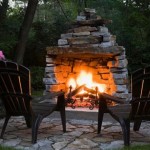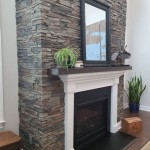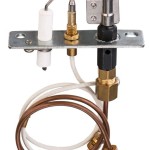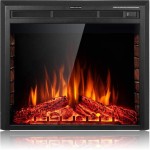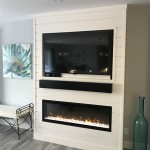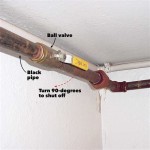Redoing A Brick Fireplace: A Comprehensive Guide
A brick fireplace, often a focal point in a living space, can become outdated or simply not align with evolving aesthetic preferences. Redoing a brick fireplace is a significant undertaking that can dramatically improve the visual appeal of a room. This process can range from simple cosmetic updates to complete overhauls, each demanding careful planning and execution. This article will provide a comprehensive guide to redoing a brick fireplace, covering essential considerations and key techniques.
Assessing the Existing Fireplace and Defining Goals
Before embarking on any renovation project, a thorough assessment of the existing fireplace is crucial. This assessment should include an inspection of the brickwork, the firebox (if applicable), the hearth, and the surrounding structure. Identifying any structural issues, such as cracks, loose bricks, or water damage, is paramount, as these problems must be addressed before any cosmetic work begins. Ignoring structural issues can lead to more significant and costly repairs down the line, potentially compromising the safety and functionality of the fireplace.
The type of fireplace also influences the approach to redoing it. A wood-burning fireplace, for example, will have different requirements than a gas fireplace. Understanding the type of fireplace and its operational components is essential for safe and effective renovation. This includes knowing the location and function of gas lines, vents, and other essential components.
Defining clear goals for the project is equally important. What is the desired outcome? Is the goal to simply update the appearance, or to completely transform the style of the fireplace? Are there specific colors, textures, or styles that the homeowner wishes to achieve? These goals will guide the selection of materials, techniques, and the overall design of the project. Creating a mood board or collecting images of fireplaces that align with the desired aesthetic can be a helpful exercise in defining these goals.
Furthermore, budget considerations play a critical role in shaping the scope of the project. Determining a realistic budget upfront will help to narrow down the options and prevent overspending. It is prudent to factor in potential unexpected costs, such as repairs or material price increases. Obtaining quotes from multiple contractors, if professional assistance is required, is essential for understanding the overall cost implications.
Preparation is Key: Protecting the Work Area and Preparing the Brick
Proper preparation is crucial for a successful fireplace renovation. Before starting any work, the surrounding area must be protected. This involves covering the floors, walls, and furniture with drop cloths or plastic sheeting. Securing the coverings with painter's tape will prevent them from shifting during the renovation process. Removing any nearby decorations or furniture will minimize the risk of damage and provide ample workspace.
Preparing the brick surface is equally important. Cleaning the brick thoroughly is the first step. Over time, brick can accumulate soot, dust, and grime, which can interfere with the adhesion of paint, mortar, or other materials. A wire brush and a solution of water and mild detergent can be used to scrub the brick. For more stubborn stains, a specialized brick cleaner may be necessary. It is important to follow the manufacturer's instructions when using any cleaning products and to wear appropriate protective gear, such as gloves and eye protection.
After cleaning, the brick should be rinsed thoroughly with clean water and allowed to dry completely. This may take several hours or even overnight, depending on the humidity and temperature. Ensuring that the brick is completely dry is essential for proper adhesion of any coatings or finishes.
Next, inspect the mortar joints between the bricks. If any of the mortar is crumbling or missing, it should be repaired before proceeding with the renovation. This process, known as repointing, involves carefully removing the damaged mortar and replacing it with fresh mortar. Repointing not only improves the appearance of the fireplace but also helps to prevent water damage and structural problems.
Finally, consider applying a primer to the brick surface. A primer can help to improve the adhesion of paint or other finishes, resulting in a more durable and long-lasting result. Selecting a primer that is specifically designed for use on brick is important. Follow the manufacturer's instructions for application and drying times.
Techniques for Redoing a Brick Fireplace: Painting, Whitewashing, and Applying Stone Veneer
Several techniques can be employed to redo a brick fireplace, each offering a different aesthetic and level of effort. Painting the brick is a common and relatively straightforward option. Whitewashing involves diluting paint with water to create a translucent finish that allows some of the brick's natural color and texture to show through. Applying stone veneer is a more involved process that involves covering the brick with thin slices of natural or manufactured stone.
Painting: When painting brick, selecting the right type of paint is crucial. Latex paint is generally recommended for interior brick surfaces because it is durable, easy to clean, and available in a wide range of colors. Before painting, apply a primer that is specifically designed for use on brick. This will help to ensure that the paint adheres properly and provides a uniform finish. Apply the paint in thin, even coats, using a brush or roller. Allow each coat to dry completely before applying the next. Multiple coats may be necessary to achieve the desired level of coverage.
Whitewashing: Whitewashing involves diluting latex paint with water, typically in a ratio of 1:1 or 1:2. The diluted paint is then applied to the brick using a brush or sponge. The amount of water used will determine the opacity of the finish. For a more subtle effect, use more water. For a more opaque effect, use less water. After applying the whitewash, use a clean cloth to wipe away excess paint, revealing the brick's texture and color. This technique creates a rustic, aged look.
Applying Stone Veneer: Applying stone veneer is a more complex process that requires specialized tools and skills. Stone veneer is available in both natural and manufactured varieties. Natural stone veneer is more expensive but offers a unique, authentic look. Manufactured stone veneer is less expensive and more lightweight, making it easier to install. Before applying the stone veneer, prepare the brick surface by attaching a metal lath to it. The metal lath provides a surface for the mortar to adhere to. Apply a layer of mortar to the metal lath and then press the stone veneer into the mortar. Use spacers to maintain consistent spacing between the stones. After the mortar has dried, grout the joints between the stones using a grout bag. Wipe away any excess grout with a damp sponge.
Regardless of the chosen technique, safety precautions should always be followed. Wearing safety glasses, gloves, and a dust mask is essential to protect against dust, debris, and chemicals. Working in a well-ventilated area is also important, especially when using paints or cleaning products. Careful planning and execution are essential for achieving a successful and aesthetically pleasing result.
Choosing the right technique depends on the desired aesthetic, budget, and skill level. Painting is a cost-effective and relatively easy option for updating the appearance of a brick fireplace. Whitewashing is a good choice for creating a rustic, aged look. Applying stone veneer is a more involved process but can dramatically transform the fireplace and add significant value to the home.
When choosing a technique, consider the overall style of the room and the desired aesthetic. A painted brick fireplace can be a good choice for a modern or contemporary room. A whitewashed brick fireplace can be a good choice for a farmhouse or rustic room. A stone veneer fireplace can be a good choice for a more traditional or luxurious room.
Ultimately, redoing a brick fireplace is a rewarding project that can significantly enhance the look and feel of a living space. By carefully assessing the existing fireplace, defining clear goals, preparing the surface properly, and choosing the right technique, homeowners can achieve a stunning and personalized result.

16 Red Brick Fireplace Makeover Ideas

Diy Painted Brick Fireplace Makeover On A Budget Before After The Confused Millennial

How To Update A Brick Fireplace Homemade Ginger

16 Red Brick Fireplace Makeover Ideas

Brick Fireplace Makeover Before And After Ideas Cool Makeovers Remodel Home Red Fireplaces

25 Beautiful Diy Brick Fireplace Makeovers

Mortar Wash Brick Fireplace Makeover Dimples And Tangles

Brick Fireplace Makeover Before And After Decorating Painting Id Painted Fireplaces Paint
:max_bytes(150000):strip_icc()/MadetobeaMommaBefore-5bb2476446e0fb002607ad4f.jpg?strip=all)
Before And After Fireplace Makeovers

How To Paint A Brick Fireplace
Related Posts

